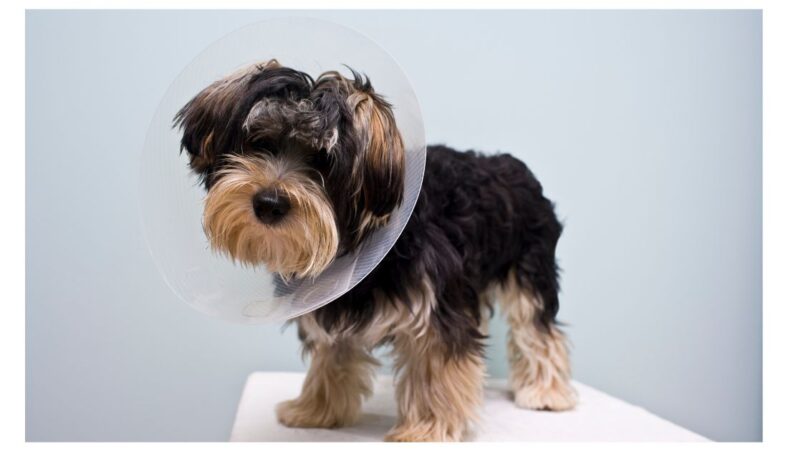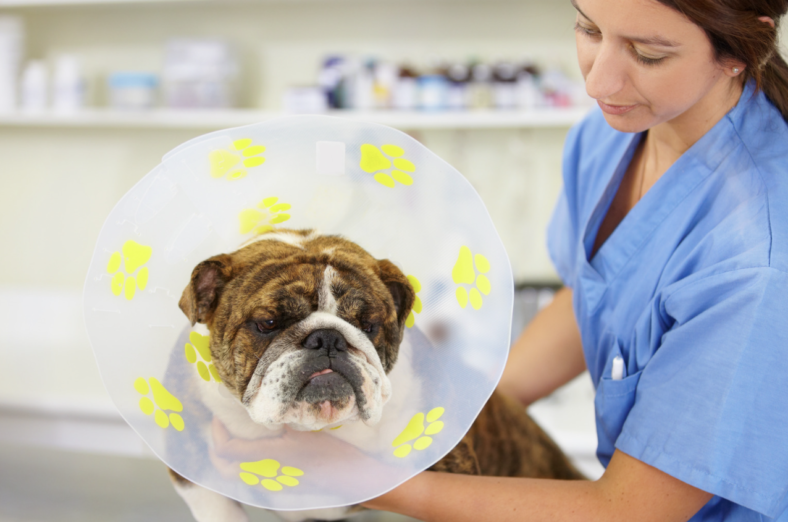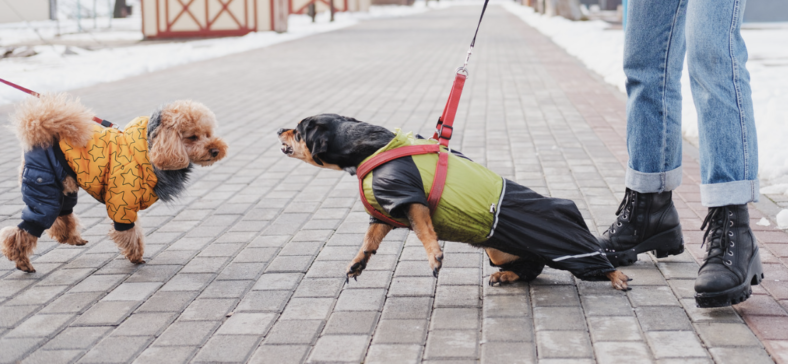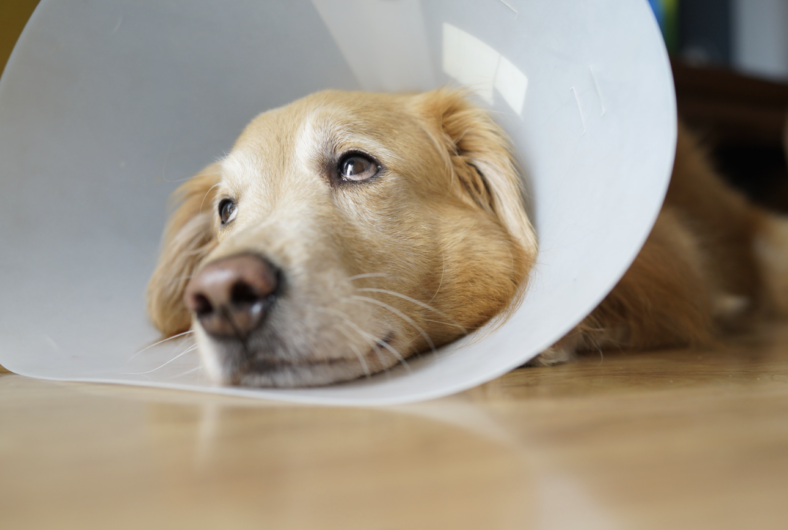6 Signs Your Dog Needs To Be Neutered ASAP!
Most dog lovers have at least imagined what the puppies of our precious canine companions might look like. After all, who wouldn’t want to see a glimpse into the puppy life of their four-legged best friend? As tempting as the idea of puppies might be, the best thing to do for your dog is to get it spayed or neutered.
Veterinarians around the world agree that spaying or neutering your pet is the best way to enhance their health. Spay and neuter surgeries protect against certain cancers, elongate canine lifespan, and reduce behavioral problems along the way like reactivity, marking, mounting, and so on. As a dog owner, you want your pup to be happy and healthy for years, and ensuring they are spayed or neutered is one of the most crucial steps.

In this guide, we’re going to cover the ins and outs of spaying and neutering dogs, what the benefits are, if there are any risks, and how you can start to identify signs your dog needs to be neutered ASAP.
What Are The Signs Your Dog Needs To Be Neutered?
If you have a dog as a puppy and aren’t sure when they need to be spayed or neutered, there are a few surefire ways to figure it out. First and foremost, talk to your veterinarian. One of the first things you should do upon buying or adopting a dog is find a vet. In fact, it’s better if you find the vet before you get the dog. Your vet will be able to examine your dog and determine when the best time to fix them will be.
Spay and Neuter: Top 10 Places for Affordable or Free Services!
Most dogs should be spayed or neutered around 6–9 months old, but veterinarians may recommend large breeds wait until 12–14 months.
For dog owners, some other signs your male dog needs to be neutered or it’s time to get your female dog spayed include:
- Excessive marking behavior
- Heightened reactivity
- Mounting
- Roaming or escaping from home
- Displaying sexual behaviors
- Hyperfocus on genitalia/genital irritation
What Does it Mean To Spay or Neuter a Dog?

When you get a dog spayed or neutered, they undergo a procedure to surgically remove their gonads (testes or ovaries), and the uterus—in the case of female dogs. This process makes producing puppies impossible and reduces the risk of a litany of health problems for your pup.
When neutering—also called castration—a male dog, the veterinarian carefully removes the testes from the scrotum via incision. Some extra-large or older male dogs may have the full scrotum removed, but most often the scrotum is sewn up and kept intact. Following a neuter, the loose skin typically tightens and shrinks. Because this procedure is external for the most part, recovery is very easy.
When spaying a female dog, the veterinarian will remove both ovaries via an abdominal incision right below the dog’s belly button. Many veterinarians remove both ovaries and the uterus, though some may use a technique that only removes the ovaries. Because this procedure requires an abdominal incision, the recovery time is a little longer than for male dogs.
Is Spaying or Neutering My Dog Safe?

Yes, it is safe to have a dog fixed, but as with all surgical procedures, there are risks and potential side effects. Spay and neuter surgeries are standard practice for veterinarians, and the risk of serious complications is low. The vast majority of spay/neuter surgeries are quick, easy to recover from, and ultimately improve the life of the dog.
It’s important to remember that neutering or spaying your dog will alter their hormones, which is the desired effect but can also pose certain risks. For example, some veterinarians may recommend that large or extra-large dog breeds wait to be neutered or spayed until they have achieved enough physical growth. Some vets may recommend waiting up to or more than a year, or until the first time you notice your female dog in heat.
While the overall effect of spaying or neutering a dog is beneficial, there are some studies that suggest fixed dogs may be more prone to joint problems (e.g. hip dysplasia and bone cancers), enlarged prostates (benign prostatic hyperplasia), and prostate cancer, but other studies suggest that neutered dogs are less likely to develop these conditions. These issues are not significant or prevalent enough to sway the opinion of the veterinary world, which agrees pets should be spayed or neutered for their health and happiness.
Risks Associated with Keeping Intact Dogs
If the few risks of spaying or neutering your dog make you nervous, consider the far longer list of risks associated with keeping your dog intact. For example, an intact male dog will be much more prone to cancers, urine marking, reactive or aggressive behavior, mounting other dogs, and similar behaviors influenced by high testosterone levels.

Female dogs that are not spayed are far more likely than spayed female dogs to develop mammary cancer, roaming habits, and behavioral problems. In particular, dogs that are not spayed or neutered early enough may exhibit long-term behavioral issues that may not be resolved following spaying or neutering.
It’s also important to note that the US and many other countries are struggling with pet overpopulation. When people neglect to spay and neuter their dogs either on purpose or accidentally, the risk of unwanted pregnancy goes up exponentially. Even if you don’t think your dog could get pregnant or get another dog pregnant, accidents happen. Intact dogs are also far more likely to roam in search of other dogs in heat than fixed dogs, which can turn your pup into a flight risk.
Benefits of Spaying & Neutering Dogs

If the advice of your veterinarian isn’t enough to sway you to neuter or spay your dog, consider the many benefits of this simple, standard procedure. Spay and neuter surgeries are linked to longer lifespans, improved behavior, and fewer health problems overall—let’s touch on just a few:
- Longer lifespan: On average, neutered male dogs live 18% longer than intact male dogs, and spayed female dogs live 23% longer than intact female dogs.
- Eliminate the risk of certain cancers: Because their gonads and reproductive organs are removed during spay and neuter surgeries, fixed dogs cannot develop testicular cancer, ovarian cancer, and uterine cancer. Many female dogs are also at a reduced risk for mammary cancer.
- Reduced reactivity: The long-held belief that spaying and neutering dogs create reduced aggression has been debunked, but it is true that with less hormonal fluctuation, dogs show less reactivity towards other dogs and blunted interest in sexual activity. Rather than focusing on mating, spayed and neutered dogs may focus more on play or socialization. Aggression can be found in both fixed and intact dogs and has more to do with their environment than hormones. Neutering and spaying can make dogs calmer, but again this is not related to aggression.
- Reduced risk of roaming: Dogs roam off their property most frequently in search of a mate or attention from other dogs. This behavior can be dangerous for your dog’s safety and could cause unwanted pregnancy. By spaying or neutering your dog, you not only reduce their instinct to roam but also create a reduced risk of unwanted pregnancies should they wander off.
- Reduce territorial behaviors: Intact dogs—particularly male dogs—are prone to behaviors like marking before they are neutered. This can be frustrating from a cleaning perspective and can be frustrating for your dog who feels the need to establish territorial ownership. While some dogs will still mark or pee inside following a spay or neuter, neutering your male dog often significantly reduces this behavior.
When To Spay or Neuter Your Dog FAQ

We’ve got a few more burning questions to answer before we wrap this blog up—keep reading to see what other dog owners are wondering about when to fix their dogs.
Should you let a female dog go into heat before spaying?
No. Most veterinarians recommend that you get your female dog spayed before she enters her first heat. In some rare circumstances or with giant dog breeds, your vet may recommend waiting a little longer before having your dog fixed, but this is not a choice you should make independent of their advice.
How many times per year do female dogs go into heat?
2 times per year is the average heat cycle for intact female dogs. Some smaller breeds may have more cycles, while giant breeds may have fewer. If your dog is spayed she will not go into heat and you will not need to manage this sometimes stressful and always messy time.
Do dogs need to stay overnight after getting spayed or neutered?
Most neuter operations are outpatient, and you’ll be able to bring your male dog home the same day as surgery. Many female dogs are able to go home the same day as well, but because a spay is a more invasive procedure, some may need to remain at the veterinary hospital overnight for observation.
Related Articles:
- Spay and Neuter: Top 10 Places for Affordable or Free Services!
- Are “Quiet Ears For Dogs” A Good Way To Stop The Barking?
- So, Your Dog Peed On Your Bed…
- Why Your Dog Secretly Hates Your Hugs
- How to Calm Your Reactive Dog. What It Is & How To Fix It



